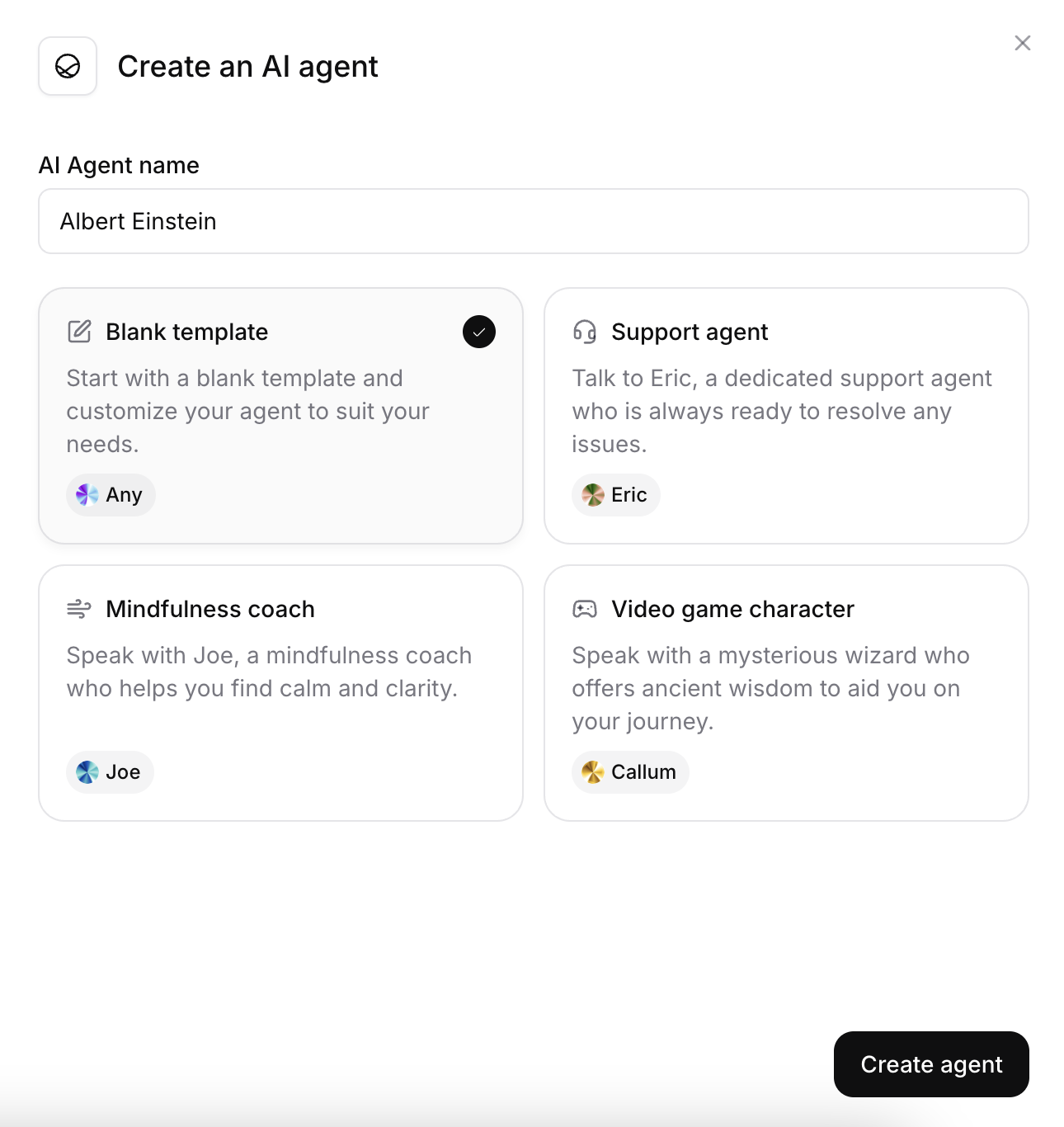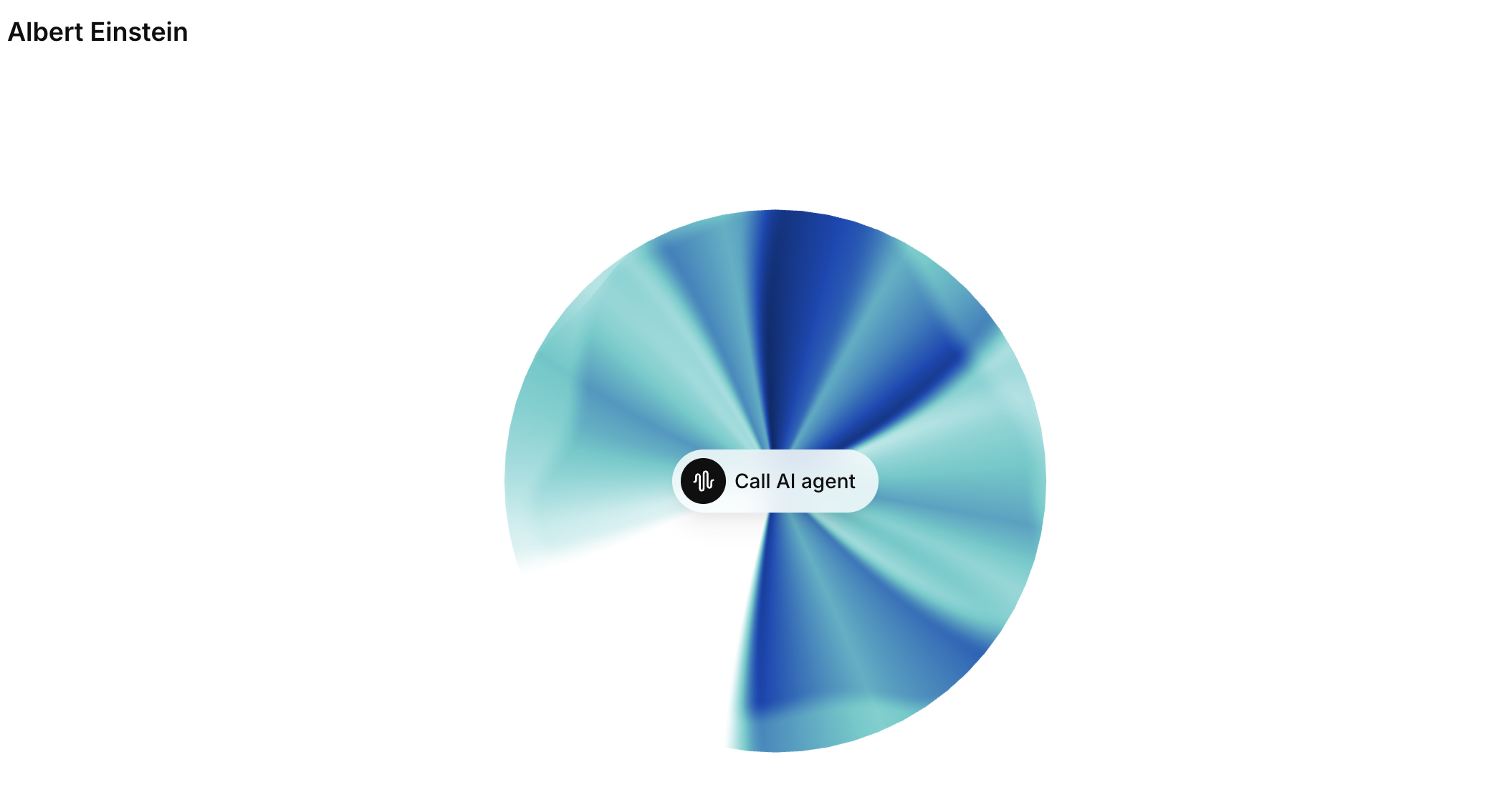“Ms. Johnson, can I ask Marie Curie another question about radioactivity?”
“Mr. Rodriguez, can we ask Martin Luther King Jr. more about why he wrote his I Have a Dream speech “
These aren’t scenes from a sci-fi movie—they’re examples of engaging classroom conversations that are possible today in schools where teachers are using AI voice technology to bring historical figures to life. In an era where capturing student attention is increasingly challenging, creating interactive dialogues with figures from the past is revolutionizing how teachers deliver curriculum across all subject areas.
You may notice that widget in the bottom right of this post inviting you to talk to Abraham Lincoln. I’ve embedded an demo of what a conversational AI might be like. I’ve also trained it using a knowledge base from official resources and documents so that you can ask him anything you like about his life or the Civil War. Go ahead and give it a try! (**Note that his responses may take 5-8 seconds, but that’s because this is a free demo for this blog. When created locally for your classroom, it’s much faster and more natural.) Once you are done trying it, return back to reading the rest of the article, and learn how you can create one yourself.
The Challenge of Creating Truly Engaging Classroom Activities
Every teacher knows the struggle: How do you create engaging classroom activities that compete with the high-stimulation digital world students live in? Traditional worksheets, lectures, and even most educational videos can’t match the interactive experiences students have outside school.
This challenge is particularly acute when teaching about historical figures, scientific discoveries, literary characters, or abstract concepts that feel distant from students’ everyday experiences. Without personal connection, these topics often fail to resonate, leading to superficial understanding and poor retention.
What if students could actually talk with Einstein about relativity instead of just reading about his theories? What if they could ask Shakespeare about his creative process or discuss civil rights strategies with Rosa Parks? This level of interactive learning creates emotional connections that transform how students relate to curriculum content.
How ElevenLabs Voice AI Creates Interactive Learning Experiences
ElevenLabs is a powerful voice AI technology that creates remarkably human-like speech in multiple languages and voices. When combined with your curriculum materials and official source documents on any subject, you can create conversational partners that not only sound like historical figures or subject matter experts but can engage in meaningful, educational conversations tailored to your curriculum.
This technology allows you to:
- Create engaging voices for historical figures, literary characters, scientists, or other relevant personalities
- Customize knowledge bases that inform fit your specific subjects or lesson plans
- Enable two-way conversations where students can ask questions and receive personalized responses
- Customize interactions for different grade levels, learning objectives, and subject areas
The result? Some of the most engaging classroom conversations your students have ever experienced—interactions that create memorable learning moments and deeper understanding of curriculum content.
Transforming Any Subject with Interactive AI Conversations
While history might seem like the obvious application, engaging classroom activities using AI conversations can enhance virtually any subject area:
History and Social Studies
Create dialogues with historical figures, allowing students to interview presidents, activists, inventors, or everyday people from different time periods. These conversations bring primary sources to life and help students understand historical perspectives in context.
Science and STEM
Develop AI scientists who can explain complex concepts, walk through experimental processes, or discuss the implications of scientific discoveries. Students can engage in conversations about everything from basic principles to cutting-edge research.
Language Arts and Literature
Enable conversations with authors or literary characters, allowing students to explore motivations, themes, writing techniques, and historical contexts. Students can ask questions about plot decisions, character development, or literary significance.
Arts Education
Enable conversations with artists, musicians, or other creative figures who can discuss techniques, inspiration, and artistic movements. Students can receive feedback on their own creative work or ask questions about artistic processes.
Creating Your First AI Conversation: A Simple Guide
Let’s walk through the process of creating your first engaging classroom conversation using ElevenLabs:
1. Create a free account at Elevenlabs.io and select AI Agent:
2. Create Your Agent: Name your agent, select Blank Template, then click Create Agent:

3. Direct Your Agent: Give your agent a first message that it will say every time a new conversation is started, as well as direction on how it should respond. Then click Save.

4. Upload Your Content: Now scroll down, find the Knowledge base section and click Add document. Here you’ll be able to add any source material using files, manual text, or URLs from websites including Youtube videos. Once done click Save and you are ready to use your Conversational AI agent.

5. Strike up a conversation: Scroll back to the top and click Test AI Agent. You’ll be able to return here any time you want and start a new conversation. Once you see the glowing orb, simply click Call AI Agent and ask whatever you like. It’s always best to test it out before using this with students.

6. Best Practices: If you uploaded trustworthy knowledge base materials then the conversational agent should be pretty accurate. However if you have concerns about it giving out wrong information, use this with students under your supervision. Rather than missing out on the potential for engaging classroom conversations, look at it as an opportunity to educate students on the ethical use of AI, and how they should verify what they here through their own research. Maybe use this as an opening conversation to get their attention and then ask them to research and write a paper on the most interesting thing they learned about from their conversation with the historical figure. keep reading for additional best practices down below.
10 Engaging Classroom Activities Using AI Conversations
Here are ten specific ways to implement this technology across different subject areas:
1. Historical Interview Series
Students prepare interview questions for a historical figure, conducting the interview in real time with the AI. This creates engaging classroom conversations that develop research skills, critical thinking, and historical understanding.
Implementation tip: Have students research the figure first and develop questions based on what they’ve learned. After the interview, discuss which answers surprised them and what they learned that wasn’t in their research.
2. Scientific Concept Dialogues
Create AI scientists who can explain complex concepts through conversation. Students ask questions to deepen understanding and apply concepts to new situations.
Implementation tip: Begin with a brief introduction to the concept, then allow students to direct their learning through questions. Follow up with hands-on activities that apply what they’ve learned through the conversation.
3. Literary Character Hot Seat
Place AI-voiced literary characters in the “hot seat” for questioning about their motivations, decisions, and feelings. This creates deeply engaging classroom conversations about literature.
Implementation tip: After reading key chapters, have students interview characters about decisions they’ve made. This builds empathy and deepens text analysis skills.
4. Mathematical Problem-Solving Consultations
Students converse with AI mathematicians who can explain problem-solving approaches and walk through solutions step by step.
Implementation tip: When students get stuck on problems, they can consult the AI mathematician for guidance rather than immediate answers, supporting productive struggle.
5. Historical Debate Simulations
Stage conversations between historical figures with opposing viewpoints on important issues, with students moderating and asking follow-up questions.
Implementation tip: After witnessing the debate, have students write reflection papers analyzing the different perspectives and forming their own opinions based on evidence.
6. Foreign Language Immersion Conversations
Students practice language skills with AI conversation partners who can adapt to different proficiency levels and provide immediate feedback.
Implementation tip: Create scenario-based conversations like ordering in a restaurant or asking for directions, allowing students to practice practical language applications.
7. Expert Feedback Sessions
Students present work or ideas to an AI expert in the field who can provide constructive feedback and suggestions for improvement.
Implementation tip: Have students revise their work based on AI feedback, then discuss what changes they made and why.
8. Time-Travel Press Conferences
Students become journalists attending a press conference with a historical figure at a pivotal moment in time, asking questions about current events from that period.
Implementation tip: Assign students to research specific events from the time period so their questions are historically accurate and relevant.
9. Ethical Dilemma Consultations
Students discuss ethical questions with AI philosophers or leaders who offer different perspectives on complex issues.
Implementation tip: After the consultation, hold a class discussion comparing the AI figure’s approach with contemporary views on the same issue.
10. Career Exploration Conversations
Students interview AI professionals in various fields to learn about career paths, required skills, and day-to-day responsibilities.
Implementation tip: Have students prepare questions about aspects of careers they’re curious about, focusing on both practical details and personal fulfillment aspects.
A Teacher’s Experience: Bringing Marie Curie to Life
Mr. Davis, a middle school science teacher, was looking for more engaging classroom activities to teach about famous scientists and their discoveries. He decided to create an AI conversation with Marie Curie using ElevenLabs.
He created a structured activity where small groups of students interviewed “Marie Curie” about her discoveries, the challenges she faced as a woman in science, and the impact of her work. Students prepared questions in advance but could also ask spontaneous follow-ups based on the conversation.
“The level of engagement was unlike anything I’d seen before,” Mr. Davis reported. “Students who rarely participated in class were eagerly asking questions. They were connecting emotionally with scientific history in ways that simply reading about Curie never achieved.”
After the activity, students completed projects about radioactivity and the scientific process that showed deeper understanding than previous classes had demonstrated. Several students, particularly girls, mentioned that speaking directly with Curie made them more interested in pursuing science themselves.
What makes these classroom conversations so engaging wasn’t just the novelty, it’s that students could direct their own learning by asking what they were personally curious about. The emotional connection they formed with Curie as a person made the scientific concepts more memorable.
Best Practices for Creating Engaging Classroom Conversations
To create effective AI conversations that truly enhance learning:
Focus on Learning Objectives
- Connect AI conversations directly to your curriculum goals
- Create structured activities with clear learning outcomes
- Use conversations as launching points for deeper learning activities
- Prepare guidance questions to keep interactions focused on educational content
Ensure Historical and Factual Accuracy
- Base AI knowledge on reputable sources
- Be transparent with students about the AI’s limitations
- Use any inaccuracies as teaching moments for critical evaluation
- Consider having students fact-check AI responses as an additional learning activity
Create Inclusive Experiences
- Ensure all students have opportunities to participate
- Provide transcripts for students who benefit from reading
- Consider different learning preferences in how you structure activities
- Be sensitive to potentially emotional or traumatic historical topics
Use Technology Thoughtfully
- Test your AI conversations thoroughly before classroom implementation
- Have backup plans for technical difficulties
- Consider how to fairly distribute conversation time among students
- Use AI conversations as supplements to, not replacements for, other learning activities
Addressing Common Teacher Questions
“How difficult is it to set up these AI conversations?”
While there is some initial setup involved, the process is becoming increasingly user-friendly. Many teachers start with just one conversation partner for a specific unit. Educational technology specialists might be available in your school to help with initial setup, and there are growing communities of educators online.
“Is this appropriate for my grade level?”
AI conversations can be adapted for almost any grade level. For younger students, conversations can be more structured with simpler language and concepts. Older students can engage in more open-ended, complex discussions with AI figures.
“How do I assess learning from these conversations?”
Follow AI conversations with reflection activities, writing assignments, projects, or discussions that allow students to demonstrate what they’ve learned. The conversations themselves are learning activities rather than assessments.
“What about ethical considerations?”
This is an important aspect to consider. Discuss with students that these are AI representations, not actual historical figures. Be particularly thoughtful about creating representations of figures from marginalized groups or traumatic historical periods. Use these tools to amplify diverse voices and perspectives.
Getting Started: Your Action Plan for Engaging Classroom Conversations
Ready to create your first AI conversation? Here’s a simple plan:
- Start small: Choose one figure relevant to your current curriculum unit.
- Explore ElevenLabs: Visit ElevenLabs.io to explore their voice capabilities and educational options.
- Prepare your content: Gather information about your chosen figure that will inform AI responses.
- Design your activity: Create a structured classroom activity with clear learning objectives.
- Test before implementation: Have a trial conversation to ensure appropriate responses.
- Introduce thoughtfully: Explain to students how the technology works and set clear expectations.
- Follow up: Connect the conversation experience to subsequent learning activities.
Conclusion: The Future of Engaging Classroom Activities
In an educational landscape where student engagement is increasingly challenging, AI conversations offer a powerful new approach to creating memorable learning experiences. By enabling students to interact directly with historical figures, literary characters, scientists, and other curriculum-relevant personalities, we create emotional connections to learning that transform understanding and retention.
These engaging classroom conversations represent more than just technological novelty—they’re about making learning interactive, personal, and meaningful. When a student can ask Marie Curie about persevering through challenges or discuss civil rights strategies with Martin Luther King Jr., they’re not just learning facts—they’re connecting with human experiences across time.
As you explore this technology in your classroom, remember that the goal isn’t simply to impress students with technical capabilities. The true value lies in creating those moments when students lean forward, eyes bright with curiosity, eager to ask their next question—because they’ve forgotten they’re completing a school assignment and have become genuinely engaged in conversation with the past.
Have you tried creating engaging classroom conversations with AI? Share your experiences or questions in the comments below!


